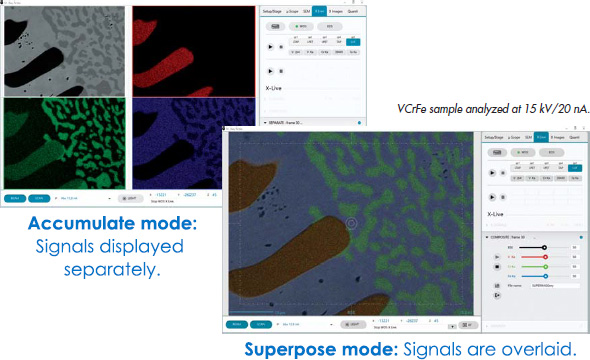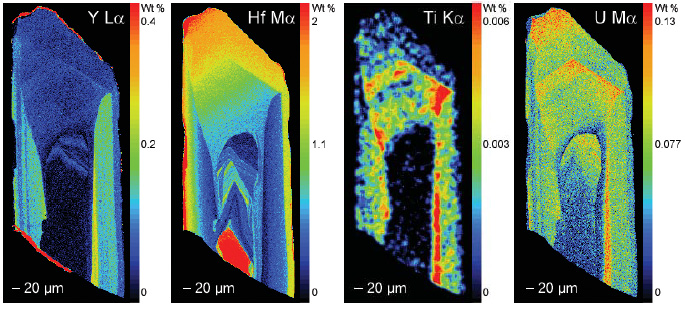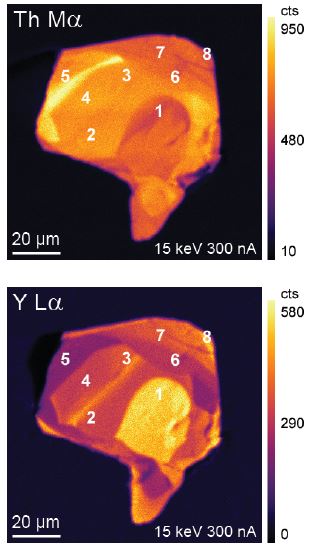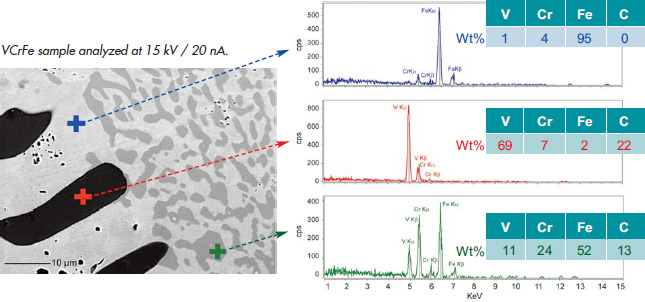CAMECA SXFive-Tactis
Versatile touchscreen EPMA (Electron Probe MicroAnalysis)
The CAMECA SXFive-Tactis is a flexible EPMA system for enhanced imaging and quantitative analysis, built on more than 60 years of technological development.
- Switch between beginner and expert mode, making EPMA accessible to everyone.
- Additional BSE detector for enhanced imaging, especially at low beam voltages and/or low beam currents.
- Fully integrated EDS hyper-mapping module for ultra fast quantitative analysis.
- Real-time acquisition of WDS and EDS X-ray images with “X-Live”, for a quick yet meaningful overview of sample composition, either in composite or superposed.
- Run your experiment remotely from your smartphone, tablet or any remote computer, with full control including SEM images.
Contact us for more information and quotes:
+44 (0)1223 422 269 or info@blue-scientific.com
Example Applications
Metals and Alloys
Map precipitates in alloys at high spatial resolution, for useful information in the development of new alloys.
High spatial resolution with high X-ray count rates can be achieved by applying low accelerating voltages (down to 5 keV) with intense beam currents to reduce electron-sample interaction.
Left: X-ray maps of Zr-Al-Ti alloys acquired at 7 keV / 100 nA. Variation of interface composition is visible around the precipitates. This provides insights into their formation processes.
Courtesy of J. LaCombe, University of Nevada, USA.
Earth and Planetary Sciences
In geological applications, EPMA delivers precise, accurate trace element measurements. With high-precision WDS and stable, reproducible current, CAMECA EPMA has become the platform of choice for emerging applications in monazite geochronology and other trace element applications.
Left: Quantified X-Ray maps of Y, Hf, Ti and U in a zircon from a Papua New Guinea eclogite. The maps show trace element zoning which indicates formation conditions.Quantified background subtraction at every pixel enables accurate visualisation of elemental distribution, even at very low concentrations.
Courtesy of J. Desormeau and S. Gordon, University of Nevada, Reno, USA.
Geochronology
Monazite is a robust mineral for geochronology, usually measured with conventional isotopic methods. Multiple ages are often recorded within a single monazite grain, at an extremely small scale that even small-spot isotopic instruments fail to resolve.
Non-destructive EPMA analysis provides accurate in-situ measurements of Th, Y, U and Pb, to determine the crystallisation age of subdomains, even at sub-micron level.
The CAMECA SXFive-Tactis delivers unmatched precision and accuracy for trace element measurements.
Left: Y Kα and Th Mα WDS maps of monazite grain from the eastern Adirondack Mountains, USA. The centre of the grain has been dated by EPMA at 1175 +/- 5 m.y. whereas the edge of the grain has been dated at 975 +/- 15 m.y. Eight distinct compositional domains can be distinguished. Domains 1 through 5 grew in a left-right orientation whereas domains 6, 7, 8 grew in a perpendicular orientation. This suggests a change in the active geological forces. Courtesy of M. Jercinovic and M. Williams, University of Massachusetts, USA.

Beginner/Expert Interfaces
The dual interface makes the SXFive-Tactis an ideal single tool for multi-user facilities.
- Beginner mode: Easy configuration and operation, with basic imaging and data processing using an intuitive touchscreen interface.
- Expert mode: Designed for skilled users with a full complement of tool parameters and options.
XLive
A unique feature on CAMECA SXFive-TACTIS microprobes, XLive feature acquires real-time WDS and EDS X-ray images in one click. This quickly provides a useful overview of your sample’s composition. Preset crystal configurations are used to acquire up to three X-ray signals, plus an SE or BSE image. These can then be displayed in composite or superposed mode.
Enhanced BSE Imaging
The additional BSE detector offers superior image quality, especially at ultra low voltage (spatial resolution 15 nm or better at 5 kV). This new BSE Low kV detector enables you to identify the area of interest on your sample quickly, and take full advantage of the FE-EPMA performance, with better trace element detection.

Integrated EDS Hypermapping
The SXFive-TACTIS comes with a fully integrated EDS HyperMap module (EDS = Electron Dispersive Spectrometer), which makes data processing and analysis faster and easier. A full EDS spectrum is collected for each pixel, and you can also extract quantitative results simultaneously.






